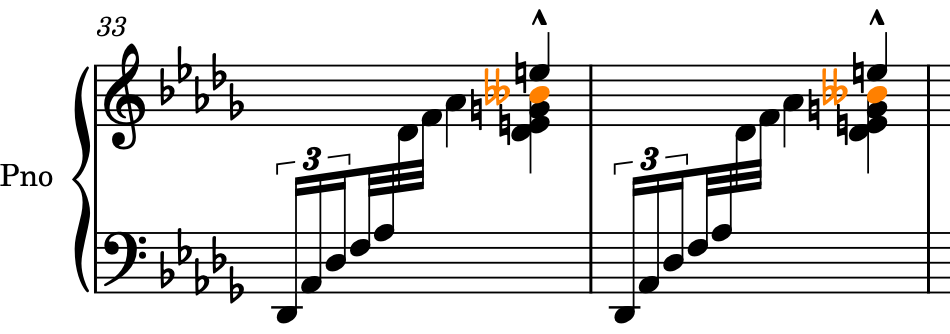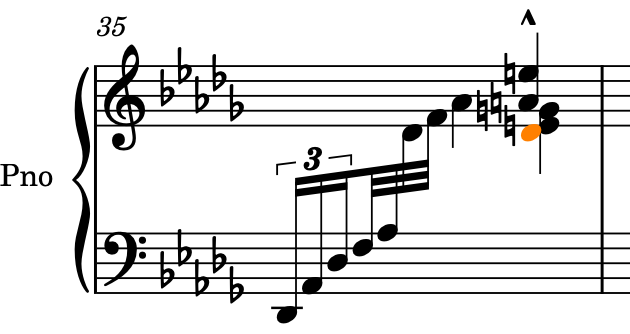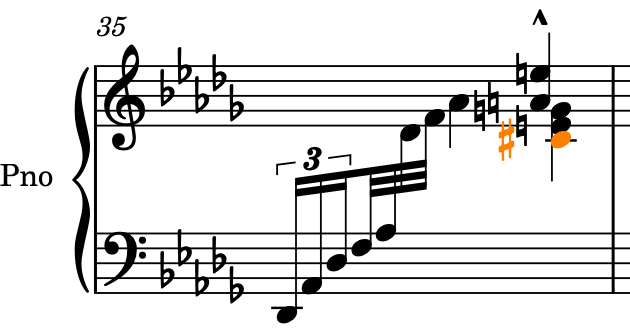Respelling notes
In bars 33-34, you input A♮s that were notated as Bs in the original edition, and a D♭ in bar 35 that was originally notated as a C♯. You may also have input a D♮ in bar 15 that was originally notated as an E. In this task, you can respell these notes.
Procedure
-
In bars 33 and 34, select the A♮s in the down-stem chord on beat 3.

-
Press Alt/Opt-= to respell them using the note above and notate them as Bs.

-
In bar 35, select the D♭ at the bottom of the down-stem chord on beat 3.

-
Press Alt/Opt-- to respell it using the note below and notate it as C♯.

- In bar 15, select the D♮ on beat 3 on the bass staff.
- Press Alt/Opt-= to respell it using the note above and notate it as an E.
Result
The A♮s and D♮ are respelled upwards, and the D♭ is respelled downwards.
-
The key commands for respelling notes use the same keys as adding accidentals, plus the Alt/Opt key: respelling upwards (Alt/Opt-=) and sharp accidentals (=) both involve raising notes, while respelling downwards (Alt/Opt--) and flat accidentals (-) both involve lowering notes.
-
You can find more accidentals than ♭, ♮, or ♯ in the Key Signatures, Tonality Systems, and Accidentals panel on the right of the window, which you can show by clicking Panels
 , then Key Signatures, Tonality Systems, and Accidentals
, then Key Signatures, Tonality Systems, and Accidentals
 in the Notations toolbox.
in the Notations toolbox.So instead of inputting an A♮ then respelling it, you could input a B straightaway.